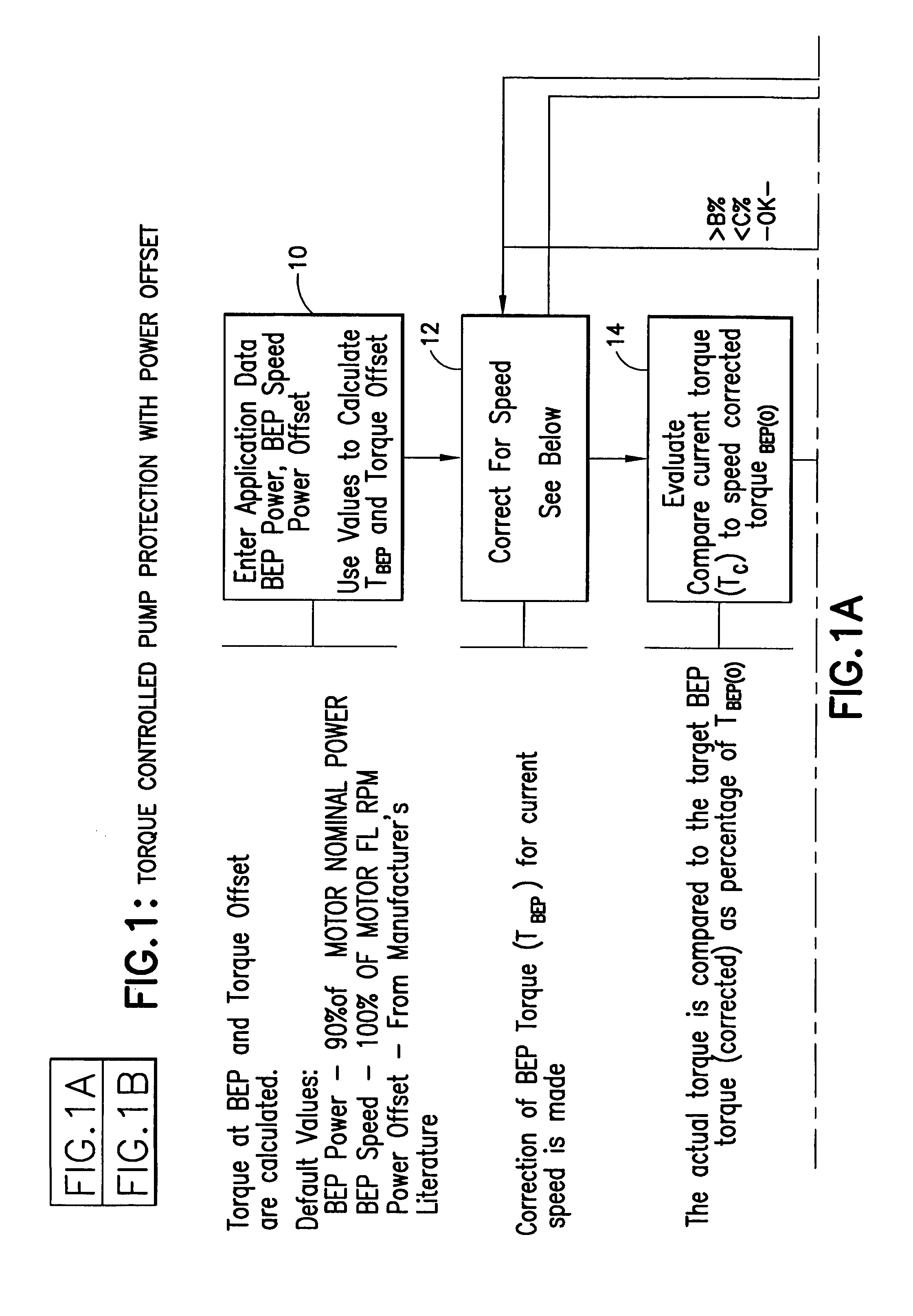Torque controlled pump protection with mechanical loss compensation
a technology of mechanical loss compensation and torque control, which is applied in the direction of pump parameters, positive displacement liquid engines, fluid couplings, etc., can solve the problems of reducing flexibility during field setup, adding cost and complexity to the drive system, and not including logic that would provide protection against undesirable operating conditions. , to achieve the effect of expanding the operating speed rang
- Summary
- Abstract
- Description
- Claims
- Application Information
AI Technical Summary
Benefits of technology
Problems solved by technology
Method used
Image
Examples
Embodiment Construction
[0030]FIG. 1 shows a flow chart having steps for performing a method according to the present invention for controlling the operation of a pump generally indicated as 100 (FIG. 3), featuring steps of either adjusting the operation of the pump 100, or issuing a warning to a user of the pump 100 of an undesirable operating condition, or both, based on a comparison of an actual torque value and a corrected torque value. The steps of the method are performed by a controller 102 of the pump 100 and motor 103 shown in FIGS. 3 and 4. The invention is described in relation to a pump, although the scope of the invention is intended to include a centrifugal pump or other centrifugal device, such as a blower, mixer or other suitable centrifugal device.
Step 10 for Entering Application Data
[0031]In operation, the controller 102 has an enter application data module 102a (FIG. 4) that first performs a step 10 for entering application data, including entering default values for the BEP power (90% o...
PUM
 Login to View More
Login to View More Abstract
Description
Claims
Application Information
 Login to View More
Login to View More - R&D
- Intellectual Property
- Life Sciences
- Materials
- Tech Scout
- Unparalleled Data Quality
- Higher Quality Content
- 60% Fewer Hallucinations
Browse by: Latest US Patents, China's latest patents, Technical Efficacy Thesaurus, Application Domain, Technology Topic, Popular Technical Reports.
© 2025 PatSnap. All rights reserved.Legal|Privacy policy|Modern Slavery Act Transparency Statement|Sitemap|About US| Contact US: help@patsnap.com



